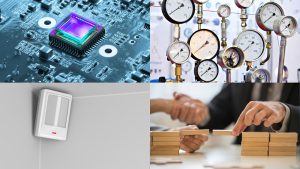Generally, road managers will deploy their team to repair a road where it is showing obvious signs of defects. In order for the fault to be noticed, however, a person must have physically visited the site to record it. While waiting for someone in the team to report it and until the road manager takes necessary action, the road will be prone to accidents due to its ill state. Moreover, there could be increased traffic congestion if a part of the road, for instance, is no longer usable. Imagine that the defect escalates rapidly, resulting in an entire road used by most people in that town being temporarily closed for an extended period. Not only would all of this be a massive inconvenience to the public, but the time and finances used to repair it would be immense.
Instead of having to face the above negative chain of events, consider you have implemented sensor technology. Long gone are the days you will have to deploy personnel to remote stations to verify the state of the road asset. With sensors, you can now receive real-time data on the condition of the asset in seconds. Better yet, you can identify the defect forming at its initial stages, thereby reducing the overall cost of repairs and averting the complete closure of the road. In essence, this is why it is essential to incorporate sensor technologies in the transportation sector.
Three Ways How Sensor Technology Makes the Transportation Industry Better
The benefits of sensor technology are not limited to road managers. Not only does it help in maintaining the health of the road, but it also significantly contributes to roadway safety and traffic management. Moreover, it helps other industries, including the automobile sector, to create innovative vehicles that increase road safety and safeguard the environment. Here are three ways sensor technology improves the transportation sector:
Embracing Healthy Road Assets and Cutting Expenses
With sensor technology, you can receive warnings as soon as a defect on the road occurs. This also means, since this process is now automated, companies will no longer have to employ a large man force to manually visit the sites repeatedly, and instead, they can resort to a small team of people to carry out essential tasks ahead. Data from CCTV cameras help road managers have a birds-eye view of the road in any city from wherever they are and identify even the most minute changes. Along with the integration of other advanced technology, this information can then be taken to consider maintenance strategies before it gets worse. Therefore, sensor technology plays a proactive role in improving the structural health of the road infrastructure, which in turn helps to improve traffic flow and ensure passenger safety.
Smart Driving With Increased Vehicle-To-Infrastructure (v2i) Communication
V2I communication refers to the wireless data exchange between vehicles and road infrastructure. In other words, a system that integrates hardware, software and firmware is used in such a way that information regarding infrastructure, including the number of road signs, traffic lights and lane markings on the road, is communicated to the vehicle and vice versa. This helps companies in the automobile sector, for instance, to manufacture vehicles that can navigate the road with less human assistance. To achieve this, however, the roadway infrastructure will need to be developed for human and machine visions. Thus, with the use of sensors, digital messages are picked up by automated cars to respond to the surrounding environment.
Reduce CO2 emissions
Data collected through pressure, temperature, distance sensors, and weather conditions can provide information regarding air pollution emitted through vehicles. This gives the driver warnings and alternatives to re-routing traffic, letting drivers avoid pollution hotspots. Alternatively, sensor technology helps in the execution of geofencing, a tool some use to send alerts to vehicles to switch to electric mode. Hence, the environment can now be protected as sensors integrated into air quality technologies are used to minimise growing congestion and emission-related problems.
An Investment Worth Every Penny
While sensor technology will significantly cut down your expenses and help you to efficiently take advantage of your resources, if you are a road manager, you should invest in a sensor-based transportation solution suite instead. With state-of-the-art technologies to make your daily processes easy whilst at the same time safeguarding the public and the environment, it is an investment worth every penny.







